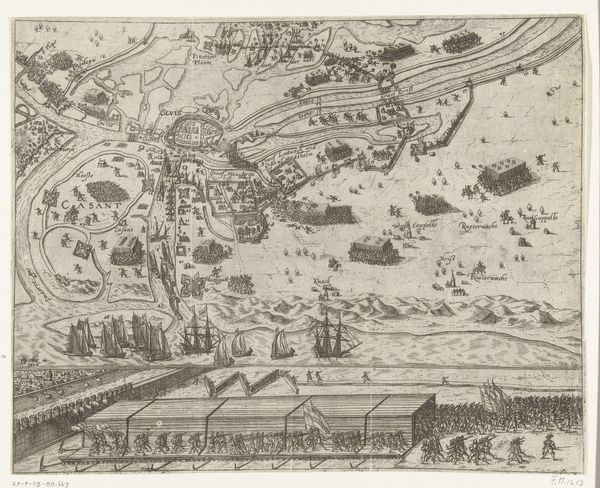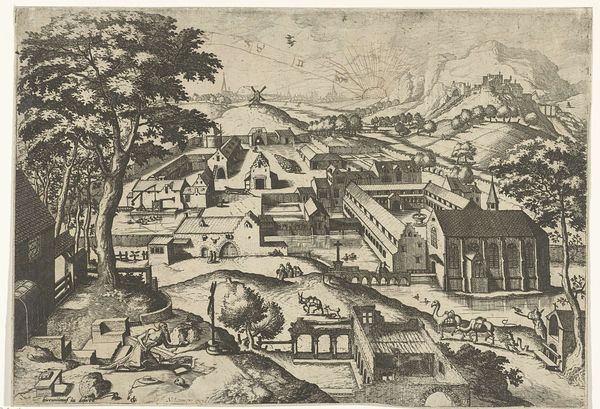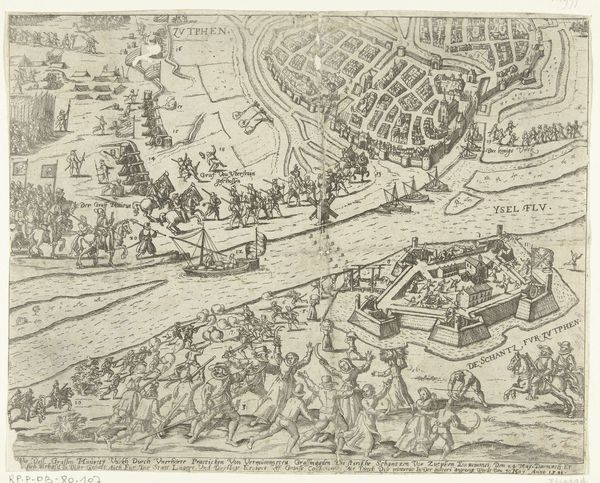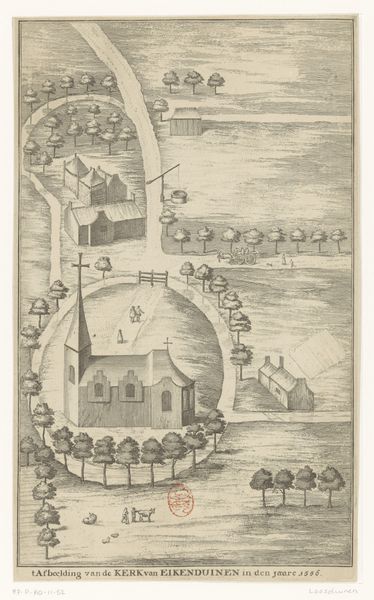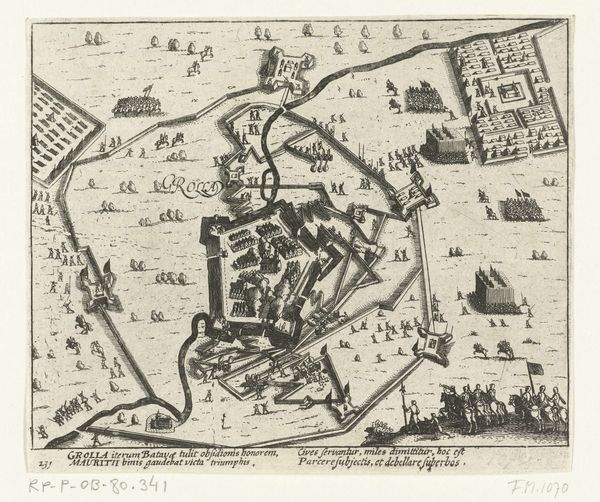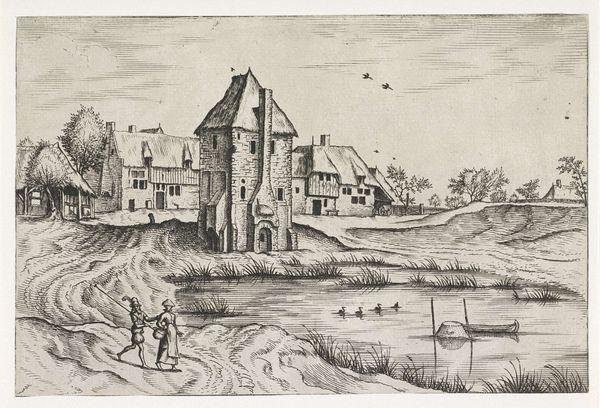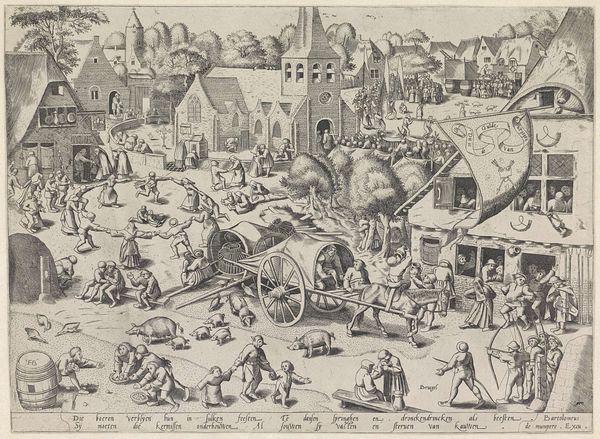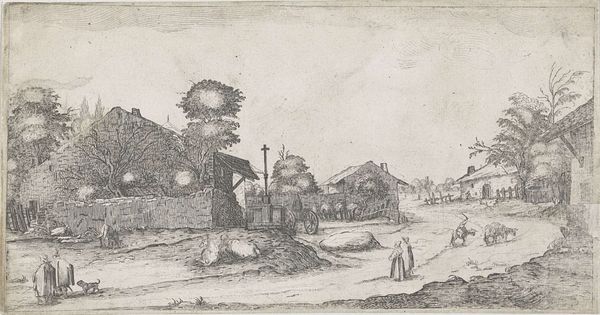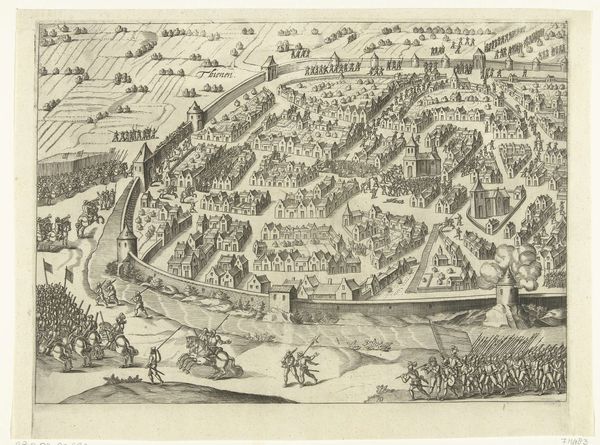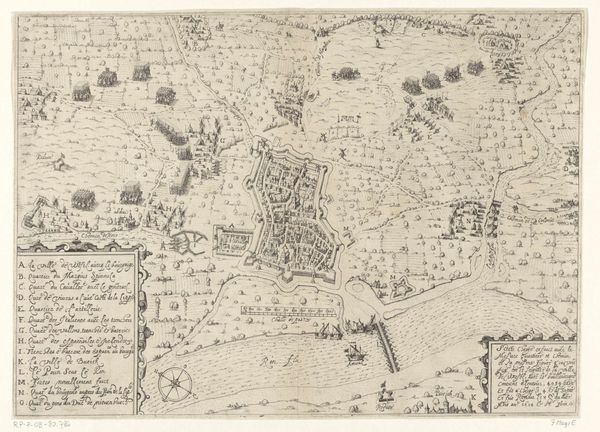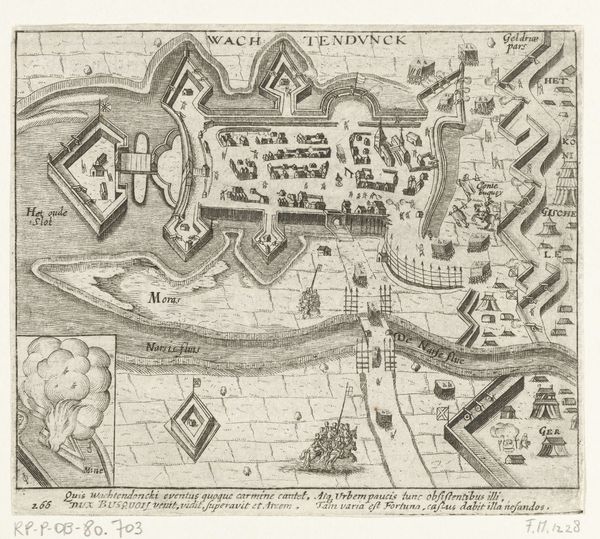
Dimensions: plate: 21.9 × 28.5 cm (8 5/8 × 11 1/4 in.) sheet: 27.9 × 37.8 cm (11 × 14 7/8 in.)
Copyright: National Gallery of Art: CC0 1.0
Curator: This is Marc Chagall’s, "La petite ville (The Town)," an ink and print drawing created sometime between 1923 and 1948. Editor: It's fascinating. I find the drawing's dense details really draw me in. It’s almost like peering into another world, but a very tangible one made with ink and paper. What strikes you about this piece? Curator: I see a clear commentary on the means of production. Consider the printmaking process. It’s inherently a method of reproduction, democratizing the image. How does the medium itself speak to the themes within the work? The visible labor—the very physical act of creating the print, etching the plate, applying the ink – is critical. This moves beyond the purely aesthetic and confronts the reality of artistic production and access. Do you agree that the visual texture echoes an image produced by laborers and repeated by mechanical and human reproduction? Editor: Yes, I definitely see that connection now. It's interesting to consider the "labor" involved in both the depicted scenes of the town and Chagall's own artistic labor to create this. The rough textures emphasize the production of art as being handmade rather than machine-made. Curator: Precisely. We can explore the materials more deeply as well. Why ink? Why a print? What cultural value is given to drawings? We are analyzing far more than composition and perspective; we are looking into the economics and material conditions that allow this image to exist. It’s a fascinating point for analysis. What has been most surprising or interesting about seeing this artwork using this method of thinking? Editor: Thinking about art with process in mind is not a traditional way that I have looked at artworks. So understanding art’s process makes me appreciate labor and social conditions behind a piece more, especially those in fine arts. Curator: Exactly! By examining the artwork through a material lens, we learn not just about art history but economic and social history as well.
Comments
No comments
Be the first to comment and join the conversation on the ultimate creative platform.
